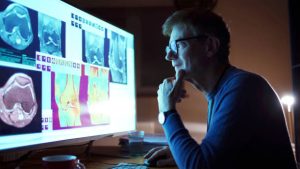Ever see a crime show where they zoom in a hazy picture and then abruptly BAM! Crystal’s face is quite clear. Alternatively separate a whisper from an orchestra of sounds. That is the magic, or more precisely the science, of Audio & Video Forensics in action. It’s about excavating more than what first greets the eye—or ear. It’s about rendering the invisible seen and the unheard heard.

Visualise a video. Right now, seems simple. But under those flowing images are layers of data. One can change the frame rates. One can splice footage. Things can be digitally removed or added. Audio, then? equally challenging. Background noise might cover important dialogues. Recordings could be altered to fit a different narrative and tampered with. Here is where the forensic investigators—dressed in their digital detective caps—enter the picture.
They use an amazing array of instruments and approaches. Imagine software able to track the origin of a camera by analyzing its digital “fingerprint.” Alternatively, like selecting a single instrument from an orchestra, algorithms that can separate particular voices from a loud recording. It’s like having a digital media supercharged magnifying glass and stethoscope.
Imagine if you will a security camera catching a fender-bender. But the license plate is invisible and the video is shaky. By cleaning the sound of the impact, an audio forensic analyst could be able to expose a vital element missing visually. Perhaps a seemingly benign phone tape has the secret to a business conflict, but careful edits have muddy the waters. These experts painstakingly review the information in search of digital footprints left behind and anomalies.
It’s not only about enhancing weak sounds or clearing hazy visuals. It has to do with confirming validity. This date and time were captured for this video? Is this audio changed? In legal processes, insurance inquiries, and even media validation, these are important considerations. Consider the ramifications of manipulated videos going like wildfire online and false news. Digital dishonesty is thwarted in part via audio and video forensics.
The field is always changing to match the fast improvements in recording technology. Fresh hurdles come from new codecs, better resolutions, and advanced editing tools. Those who produce and those who examine constantly play a cat-and- mouse game. Still, the basic objective is the same: to cut the truth from the digital noise.
To succeed in this field, one must have a certain type of mind—a combination of technical knowledge, an eye for detail that would make Sherlock Holmes jealous, and a fair dosage of doubt. They have to be part digital whisperer, part investigator, and part scientist. Working behind the scenes, they are the unsung heroes that put digital puzzles together to provide clarity in difficult circumstances. Therefore, keep in mind that there might be a lot more going on under the surface than you would think the next time you view an apparently clear movie or listen to a clearly audible recording. The digital sphere isn’t always as simple as it seems.